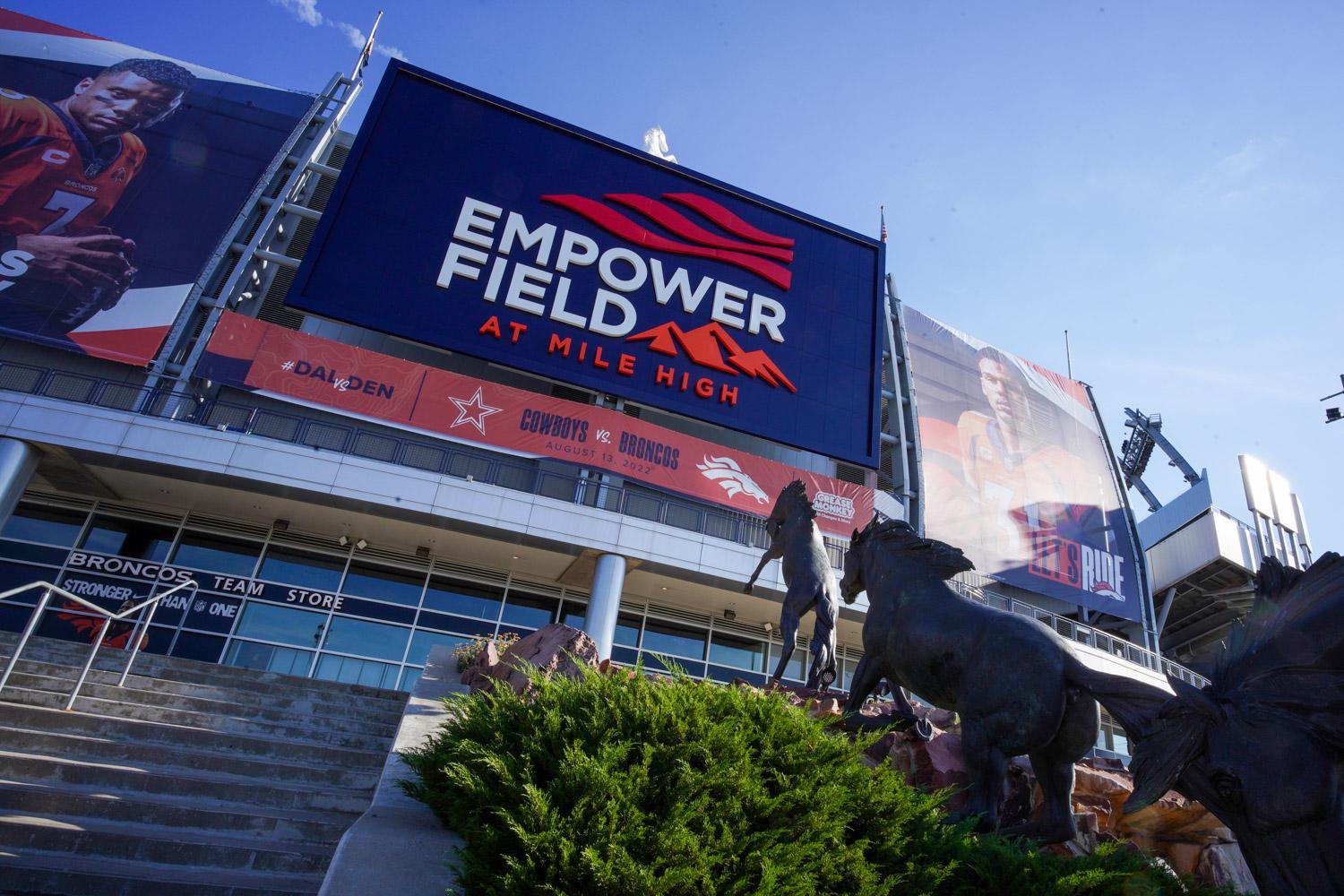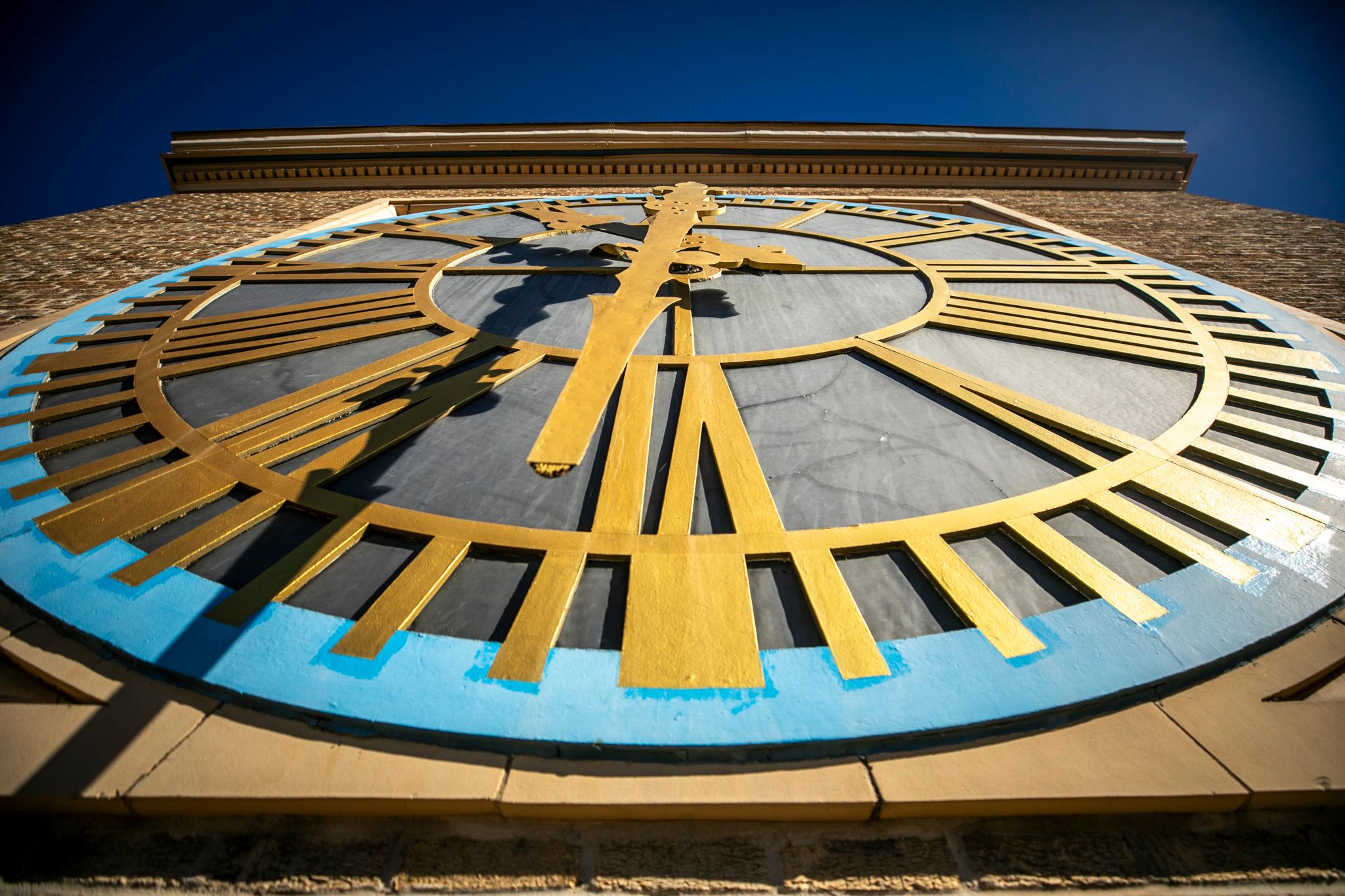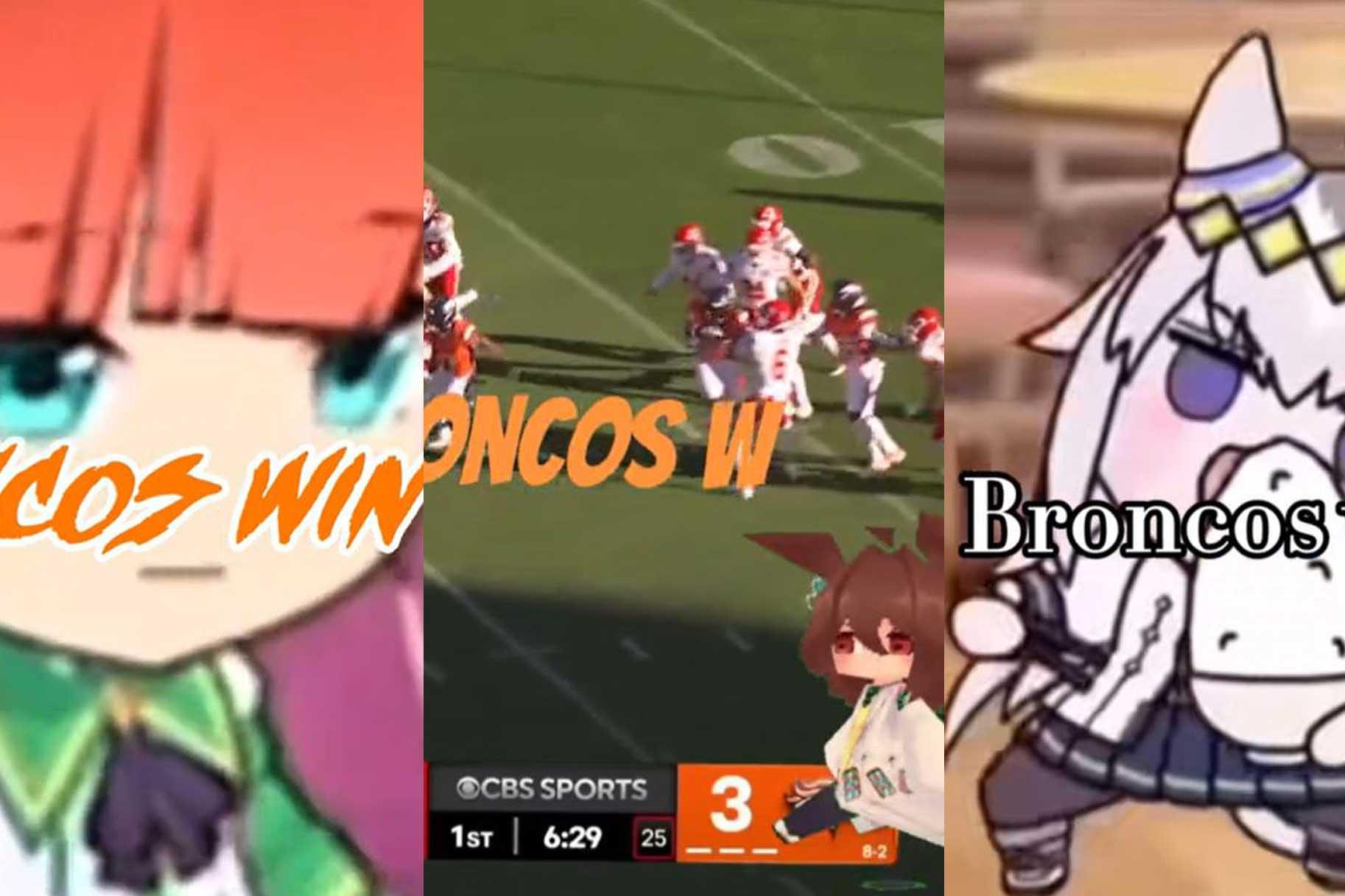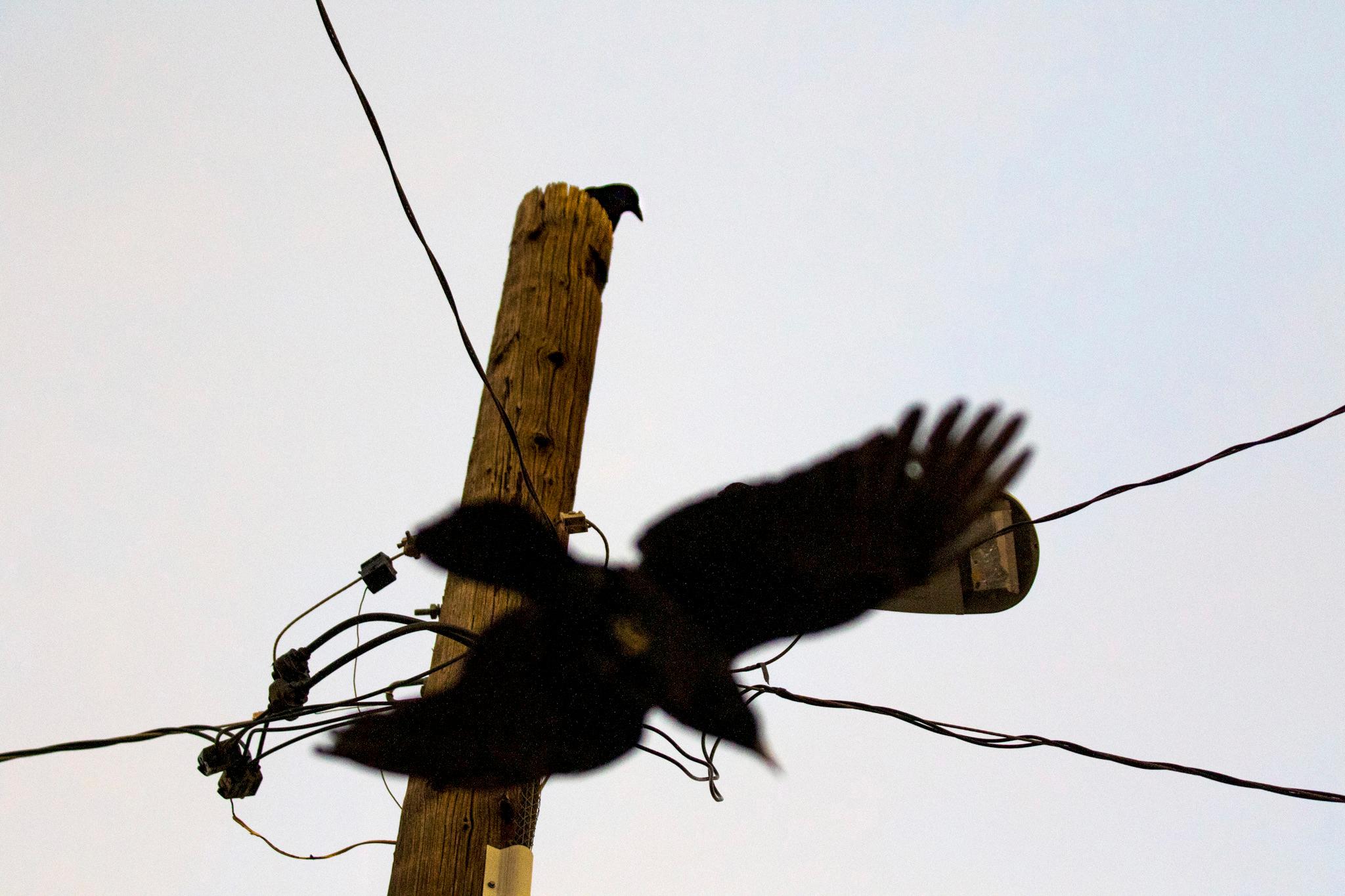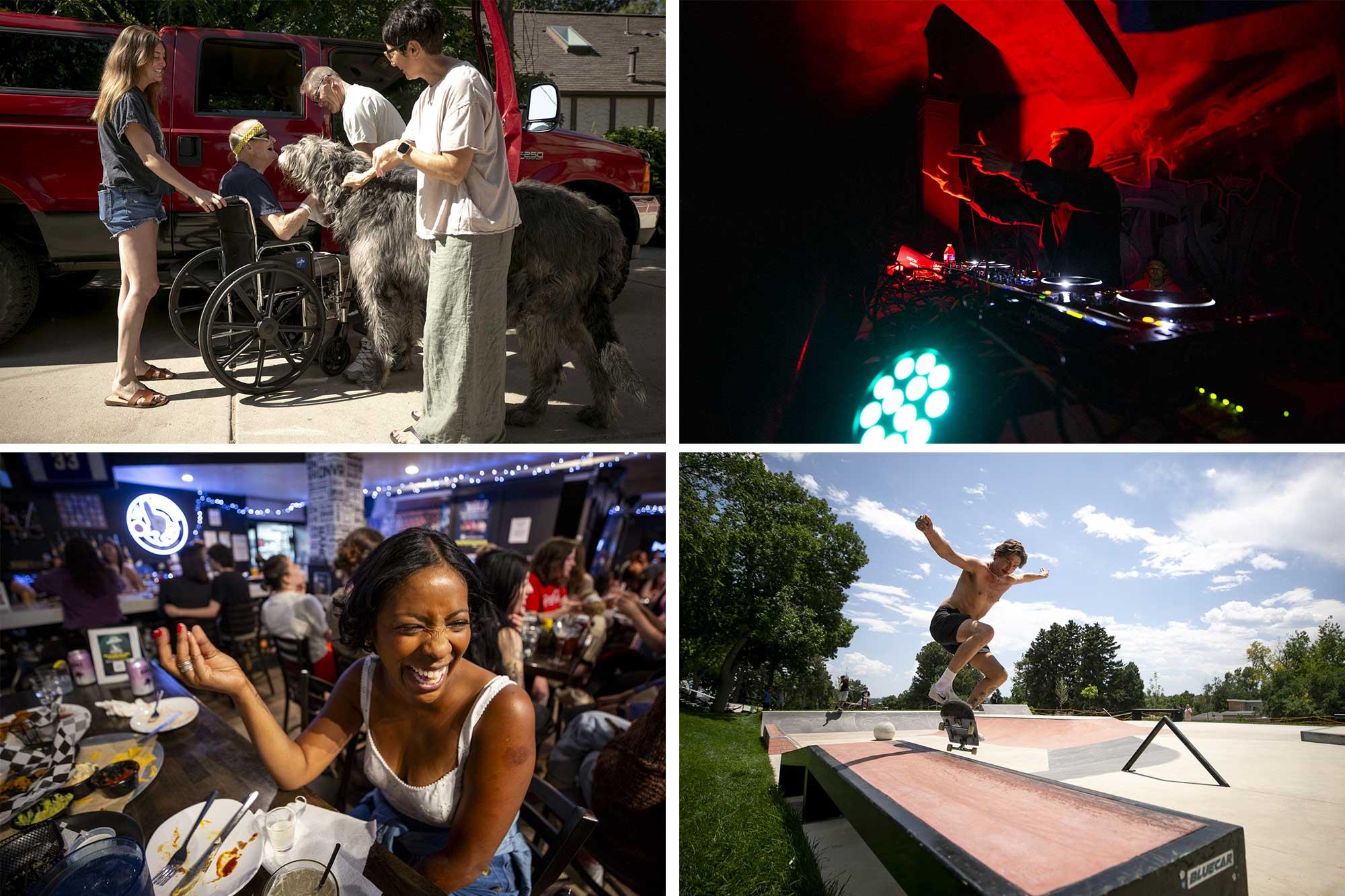Mayor Mike Johnston spent Tuesday morning doing victory laps for the Denver Broncos’ decision to stay in town.
The team announced a complex deal to build a new stadium on the city’s Burnham Yard site, which will also open up the current Empower Field at Mile High site for development in the 2030s.
On the giant table in the mayor’s office were two boxes of orange-sprinkled donuts. He was thrilled to finally have some good news in a city that has been struggling with federal funding threats, a $250 million budget hole and layoffs.
Denverite caught up with the mayor to discuss the new stadium, development projects related to the move, and ticket prices for season holders.
Among other news: He confirmed that the city would seek to demolish the current stadium at Mile High, making way for a major redevelopment project on that site.
Meanwhile, he claimed the new stadium could increase the team’s economic impact to $1 billion a year, as its planned retractable roof and accompanying mixed-use development could allow year-round events and activity. Negotiations over Burnham Yard, he said, began more than two years ago.
The Broncos say they’ll build the new stadium with private funding, though the city could pay for infrastructure, such as bridges and roads, around the site. The team also could take advantage of tax-increment financing, a form of tax subsidy, to cover some project costs.
Read the interview
Denverite: What happened today?
Mayor Mike Johnston: We think today was a historic win-win-win for the city. We announced the intent with the Broncos to build a new retractable-roof stadium at Burnham Yard. That means a 50-year extension of the Broncos franchise. It means we can host a Super Bowl at that stadium. And it means, most importantly, taxpayers don't pay a dollar to build it. And so, that's really critical.
It also means … when the Broncos move, all 80 acres of that current Mile High site would come back to us. The city would own that again. So we could then dream with neighbors about what could be possibly built at that site: housing, parks, you know. And obviously it's a key center of Sun Valley in West Denver, but it connects under the bridge directly to Ball Arena and River Mile and to the Auraria Campus.
And so you both get a new development at Burnham, which will include restaurants, bars, apartments, and a full, activated neighborhood development. You get the franchise extension, and you get a whole new Mile High. So for us, it's kind of a three-part win.
Denverite: Are the Broncos committed to doing that [mixed-use] development, or will that be other partners?
Johnston: They're totally committed to doing the Burnham development. So their vision: They've [tentatively] acquired almost 100 acres of that site that they would use to both do the stadium and then to do a full entertainment-district-style development, kind of like McGregor Square that is now at Coors Field, and like we want the River Mile and Ball Arena to be, like we want the Santa Fe Yards to be.
So really, every sports complex in the city now would be aligned to this vision of ‘no more stadiums with 80 acres of empty parking lots around it.’ But now it would be all stadiums with full neighborhood activations of restaurants and shops and bars and retail.
Denverite: The current stadium: Will that be torn down? Or is there a possibility that, say the [Colorado] Rapids could go there?
Johnston: It would be torn down, because when we tear it down, then that whole 80 acres, we could use for full redevelopment. So we would take that stadium down, and then we would spend the next three or four years building with the community an area plan for that site. They would say, ‘Yeah, we want housing here, and we want a park here, and we want some businesses on Federal [Boulevard] here. That's such a unique site.
There are a lot of other plans that could have worked. We could have rebuilt [the stadium] on the current Mile High site. They obviously could have left Denver. That would have been bad. They could have built in a different location.
But this is the only spot where you get both a full neighborhood revitalization of Burnham, you get a full neighborhood revitalization of the current Mile High site, and you get a full extension of the franchise in Denver. That's the only way to get that triple win.
(Ed. note: The mayor’s spokesperson, Jon Ewing, said it was too early to say how much demolishing Empower Field would cost or who would pay.)
Denverite: What was the negotiation process like? What were the hard moments?
Johnston: It was two years to do this. I've worked on this since the day I took office. And I think where it’s at is great now, because it's a happy ending.
But one of the hardest parts was finding the right plan for Denver Water, because Denver Water is also a treasured community asset, and we also want them to stay in Denver. And it wasn't possible to make the [Burnham Yard] site work with [Denver Water still occupying its campus next door]. Obviously, that big, iconic new building they have will stay. But the process of finding another contiguous piece of real estate of about 20 acres that was in the city was months and months of work.
(Ed. note: The Broncos plan to buy a portion of the Denver Water campus, paying to relocate some of the utility’s facilities while keeping Denver Water’s new headquarters at its current location near Burnham Yard.)
It was just a few months ago that we found the site that we took to Denver Water, on 40th and Josephine [where some of Denver Water’s operations could move]. And we were so excited about the site because Denver Water was so excited about it. We stepped in as the city and negotiated the acquisition of that first.
Because Denver Water has a slower process than the Broncos do, we said, “Let us start that process.” The landowners, to their credit, very selflessly agreed to just hand that entire contract that we negotiated over to Denver Water. And so that was what we did about 10 days ago, which was the final step.
Denverite: You've spoken about some of the development benefits that happen with opening up the current Mile High site. Are there other concrete benefits that come with keeping the Broncos here?
Johnston: Massive economic benefits. So it's about $300 million a year of economic impact on the city right now with the Broncos. With the new site, we think that easily goes over $1 billion dollars of economic impact, because I've learned much more about stadiums than I knew before.
We do right now, in addition to the Broncos games, seven or eight other events a year [at Mile High]. Think Taylor Swift concerts or Lumineers. When you have a closed facility, you can almost triple the number of events you could do. Because now, all winter, you can do a Beyoncé concert indoors.
In January, I took my wife to Beyoncé for her birthday in Atlanta. I was so bitter I had to fly to Atlanta. But when I went there, and everyone on our plane was going to the Beyoncé concert, and everyone in our hotel was going to the Beyoncé concert, and it's three nights in a row in Atlanta, I was like, “Man, this is a major economic driver for the city.”
A lot of sports fans don't know this: The NCAA Final Four, they won't play in a basketball stadium anymore. They only play in football stadiums of 70,000 people. You put a court in the middle, and then you have to have it closed at the top. So you can only do the Final Four now with a closed football stadium. So there's a whole set of opportunities that you can only get access to with this kind of structure. And so this dramatically expands the impact.
I was at the Broncos game on Sunday. The stadium is amazing, 70,000 people go there. But the way it's built now, with an 80-acre parking lot around it, you can just see sales tax seeping away, because there is no walk out of the stadium and you're like, “Hey, let's have one more beer… Hey, let's sit and have lunch or dinner.” The way the city is laid out, you know, you walk the mile back to your car, then you pretty much drive home.
Whereas, when you come out of a Rockies game, that's not what you do. You immediately go next door and get a beer or get some food or do a little shopping.
So there is a huge opportunity with the activation that comes from a Broncos game or a Taylor Swift concert, to say, immediately outside the front door of that is now great restaurants and bars and shops. That's a huge opportunity for local businesses we don't have right now.
Denverite: The city is going to spend some money on infrastructure around the site, as I understand it. What is the dollar figure on that? And can you speak to how you're justifying that in regards to the Broncos buying and retaining Burnham Yard.
Johnston: The most important part is the stadium is built for no taxpayer dollars. Land is all acquired there by the Broncos. I talked to someone who's done 30 years of stadium deals, who said, “I've never seen a deal like this. This is quite remarkable to have.” Buffalo did more than $1 billion dollars. Charlotte's doing $900 million from their city council general fund just for a renovation. The Missouri legislature just did half a billion for Arrowhead renovations. So there's tons of public dollars going into the stadiums themselves in these places.
But what will happen, in terms of process, is we have this small area plan. The public might just call it a neighborhood plan. But neighbors will get to weigh in on what are their priorities for what they want to see on the Burnham Yard site. That will inform how the Broncos do their design. Then there's a community benefits agreement where the Broncos and the community negotiate what other things are important — X percent of affordable housing or public park space. That will then define the design and layout of it, what they'll build on their footprint, and then what you'll need for accessibility to get onto their footprint. And so that's the part where the city would play a part, and the state will play a part, right?
Colfax [Avenue] is a state-owned highway. So if there's egress or ingress from there, that'll be part of their obligation. But we'll really look at, then, what is just the streetscape that's required to get in and out of the facility. But the infrastructure in the stadium and on their land — they would work on that on their own.
Denverite: So Vibrant Denver [the proposed citywide infrastructure bond], there's this $140 million [for improvements] on 6th and 8th [avenues, near the Burnham Yard site]. If voters say no, does that hurt this deal in any way at this point?
Johnston: What we know is that 6th and 8th are major; 100,000 people drive those every day. Those are major thoroughfares to connect from the west side to the east side, regardless. We have to fix those regardless of what happens. I was on 8th today. You know you can drive 10 miles an hour on 8th right now … And importantly, the city has been working on trying to fix access from those bridges into central Denver for the last five years.
In 2019, they were working on a plan for that, before I was ever mayor or the Penners and the Waltons ever owned this [Broncos] franchise. So that's going to be required to drive the area plan of those neighborhoods regardless.
I don't know what would happen if the bond didn't pass on those. What we know is we still have an obligation to fix those bridges. I mean, we do have an obligation to fix the bridges at Lincoln and the rest.
So my bigger fear would be we would lose access to all of the 100,000 vehicles crossing those bridges every day, regardless of whether they're going to Cherry Creek Mall or to City Park or to Burnham Yard. So that was why these were priorities before. That's why they'll stay priorities now. But they're big needs for the city no matter what happens in Burnham.
Denverite: Long-time fans have been talking about how they're afraid they're gonna have to [potentially] pay tens of thousands for tickets [at the new stadium]. What's your message to the season-ticket holders?
Johnston: I think this is a Broncos question. We don't control what the charges are. I mean, you know, we've said a couple things. We still really want Mile High to be in the name. We still really want there to be affordable access for ticket holders and some of the discount price tickets. We want to still have places for tailgating, all the kinds of things people care about.
But I do know it's been a tradition of almost every new stadium that’s built, that they do the one-time seat license fee, and so I'm sure that's one of the things they'll consider. I don't know what the end outcome will be. I would trust that if they did it, it's going to be according to the price you're paying for a ticket. So folks that have the lowest cost tickets, like the ones we've had, should pay the lowest prices.

